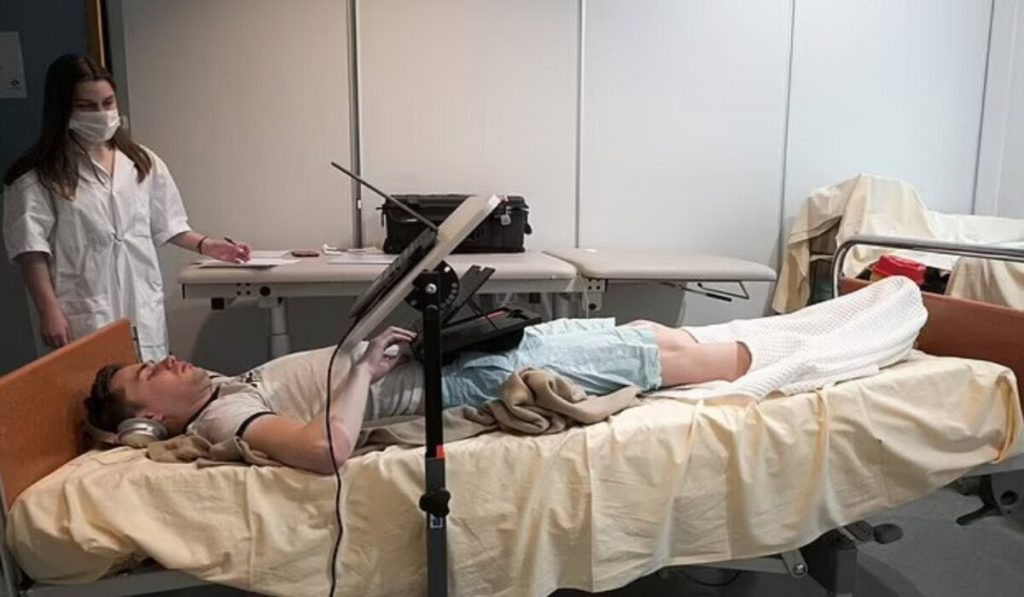The European Space Agency (ESA) is offering 12 volunteers the opportunity to be part of a research project in which they will be required to do the strenuous job of staying in bed for two months while also being rewarded €18,000 (£15,600) for their participation.
While the idea of lying in bed may sound relaxing, the volunteers will undergo various activities such as cycling, spinning, and medical tests throughout the study, all while ensuring that one shoulder remains in contact with the mattress.
The study will last for 88 days and involves male volunteers between the ages of 20 and 45.
The ESA wants to use its findings from this study to explore potential strategies for reducing the physiological changes that occur in the human body when traveling in space.
During the 60 days of the study, the participants are required to remain in beds inclined 6 degrees below horizontal with their feet elevated. They must perform daily activities such as meals, showers, and even toilet breaks from this position, ensuring that one shoulder remains in contact with the mattress at all times.
The researchers are closely monitoring the participants’ physiological responses as blood flow shifts towards the head and muscle atrophy occur due to reduced physical activity.
‘Bedrest studies offer a way of testing measures to counter some of the negative aspects of living in space,’ the space agency explained.
‘During space missions, astronauts’ bodies go through a wide array of changes due to lack of gravity – everything from their eyes to their heart is affected, and muscles and bones start to waste away.’
Although previous studies have examined the effects of prolonged horizontal positioning, this particular study, known as BRACE (Bed Rest with Artificial Gravity and Cycling Exercise), is the first to investigate the potential of cycling as a countermeasure against the physiological changes experienced by the human body in space.
The volunteers’ beds are equipped with specialized bicycles at the foot, allowing them to cycle horizontally. These beds can also be placed in a centrifuge device, which spins the study participants, causing blood to be directed towards their feet and simulating twice the force of gravity.
‘We encourage volunteers to reach their maximum effort on the bike, and then compare the impact with those who are not biking at all,’ said Rebecca Billette, head of clinical research at MEDES, the Institute for Space Medicine and Physiology in Toulouse, France.
‘We hope to understand the added value of artificial gravity to the fitness routine astronauts follow on the International Space Station,’ said Angelique Van Ombergen, ESA lead for life sciences at Human and Robotic Exploration.
‘The crew exercise two hours per day in orbit.’
And it’s not just astronauts who could benefit from the study’s findings, according to Ms Van Ombergen.
‘Results from space analogues can be useful to design better treatments for the elderly and for patients with musculoskeletal conditions and osteoporosis on Earth,’ she explained.
This study is running from April to July 2023, while a follow-up study will run from January to April 2024.

